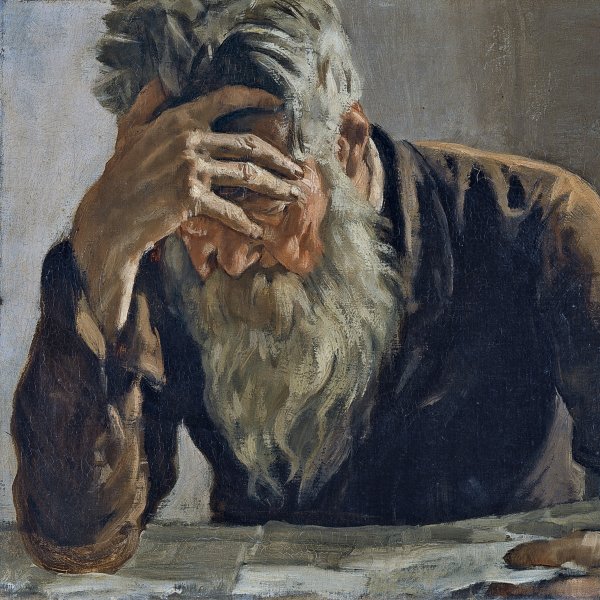Ferdinand Hodler
Berne, 1853-Geneva, 1918
The oeuvre of the Swiss artist Ferdinand Hodler, who is held to be one of the foremost Central European Symbolist painters of the late nineteenth century, was shaped by his personal conception of the world, underpinned by the principles of symmetry and rhythm. Of humble origins and orphaned at an early age, Hodler began his training in 1868 with a painter of views of his native country, Ferdinand Sommer. He moved to Geneva in 1871 to study at the École des Beaux-Art, where he began to exhibit works that chiefly depicted the working class.
Hodler travelled to Madrid in 1878 and studied the works of the Great Masters in the Museo del Prado. On returning to Switzerland he was introduced to the Symbolist trends in French painting by the poet Louis Duchosal. Thenceforward his works reinforced this aspect and were centred on representing states of mind and man’s main philosophical concerns. Dating from this stage in his development is Night, executed in 1890 (Berne, Kunstmuseum Bern), a painting related to the idea of death and sleep, which enjoyed success at the Salon de la Rose+Croix in Paris in 1892. A subsequent series of twenty-seven life-sized figures from Swiss history, painted from life, marked the start of his career as a painter of the Swiss national imaginary and the beginning of the considerable appreciation he still enjoys in his country of birth.
Hodler took part in the Berlin Secession in 1900, in the Munich Secession in 1903, and a year later showed his works together with those of Edvard Munch and Axel Gallén at the Vienna Secession. During the last years of his life he ended up becoming one of the most innovative muralists of the period, with works such as those executed for the University of Jena in 1907 and Hanover council in 1911. He died in Geneva in 1918.
Hodler travelled to Madrid in 1878 and studied the works of the Great Masters in the Museo del Prado. On returning to Switzerland he was introduced to the Symbolist trends in French painting by the poet Louis Duchosal. Thenceforward his works reinforced this aspect and were centred on representing states of mind and man’s main philosophical concerns. Dating from this stage in his development is Night, executed in 1890 (Berne, Kunstmuseum Bern), a painting related to the idea of death and sleep, which enjoyed success at the Salon de la Rose+Croix in Paris in 1892. A subsequent series of twenty-seven life-sized figures from Swiss history, painted from life, marked the start of his career as a painter of the Swiss national imaginary and the beginning of the considerable appreciation he still enjoys in his country of birth.
Hodler took part in the Berlin Secession in 1900, in the Munich Secession in 1903, and a year later showed his works together with those of Edvard Munch and Axel Gallén at the Vienna Secession. During the last years of his life he ended up becoming one of the most innovative muralists of the period, with works such as those executed for the University of Jena in 1907 and Hanover council in 1911. He died in Geneva in 1918.

